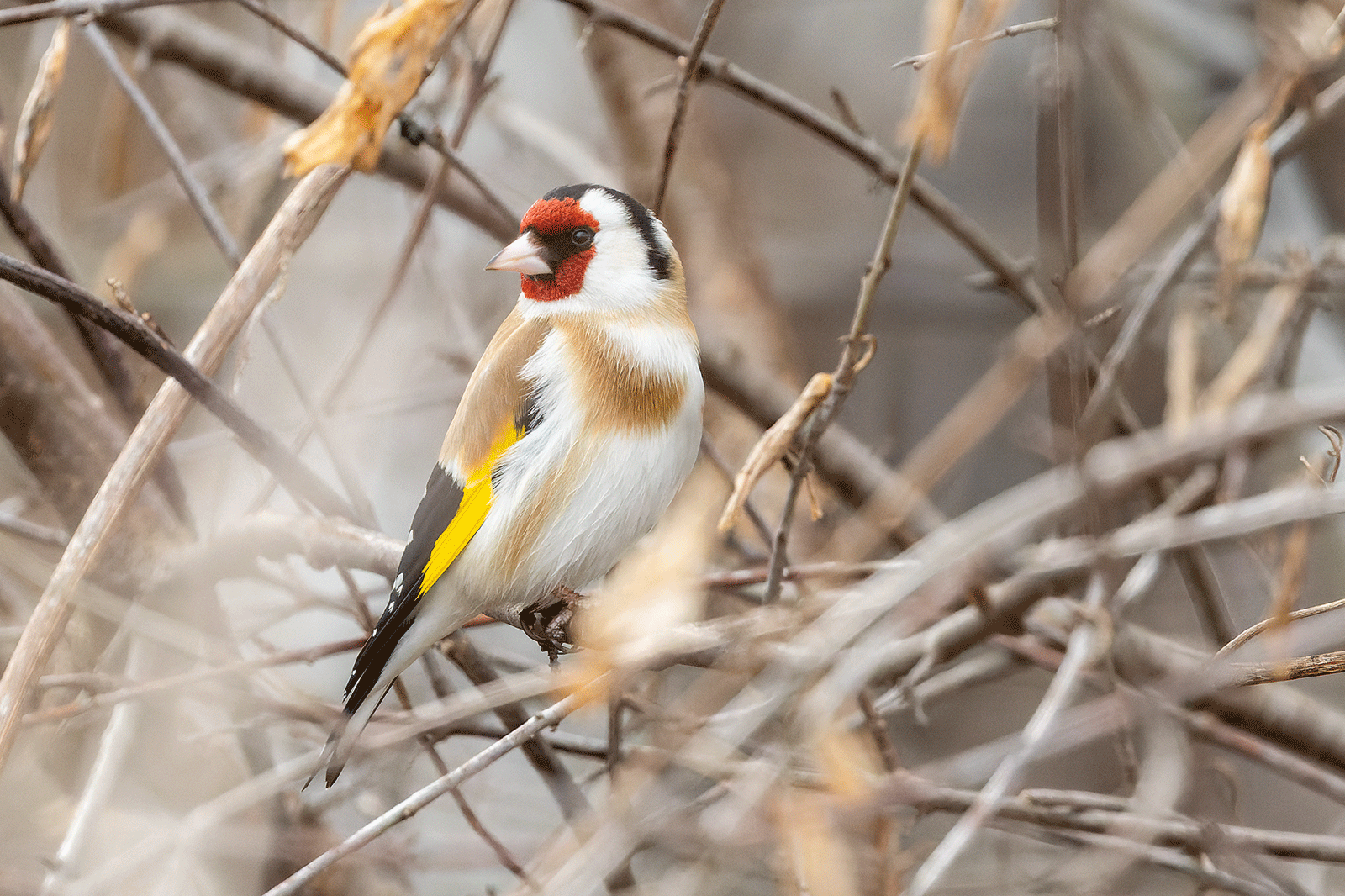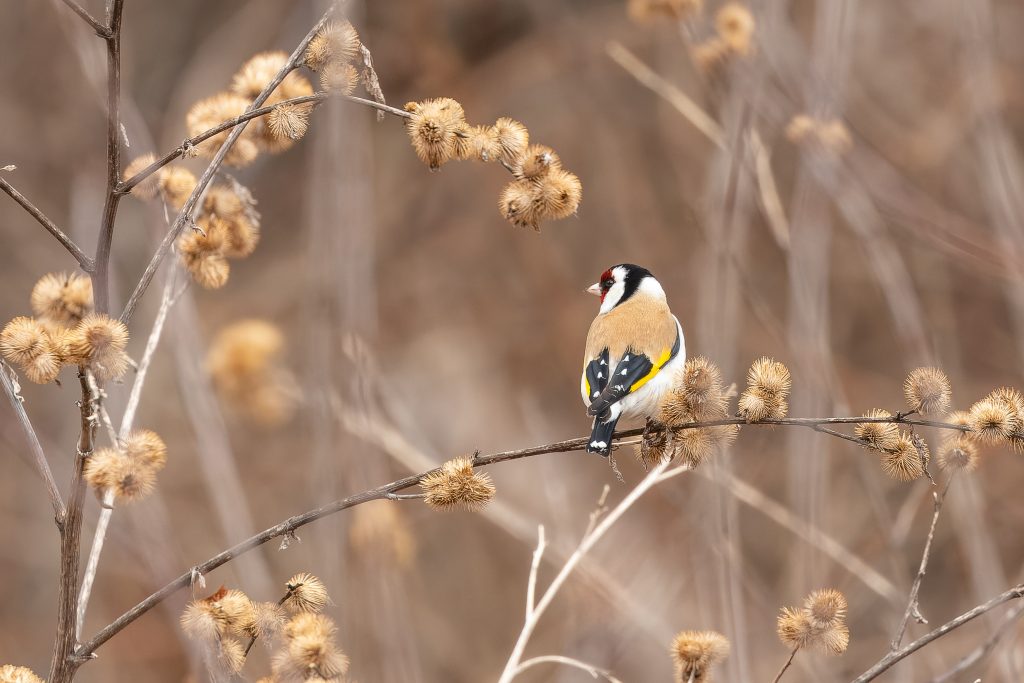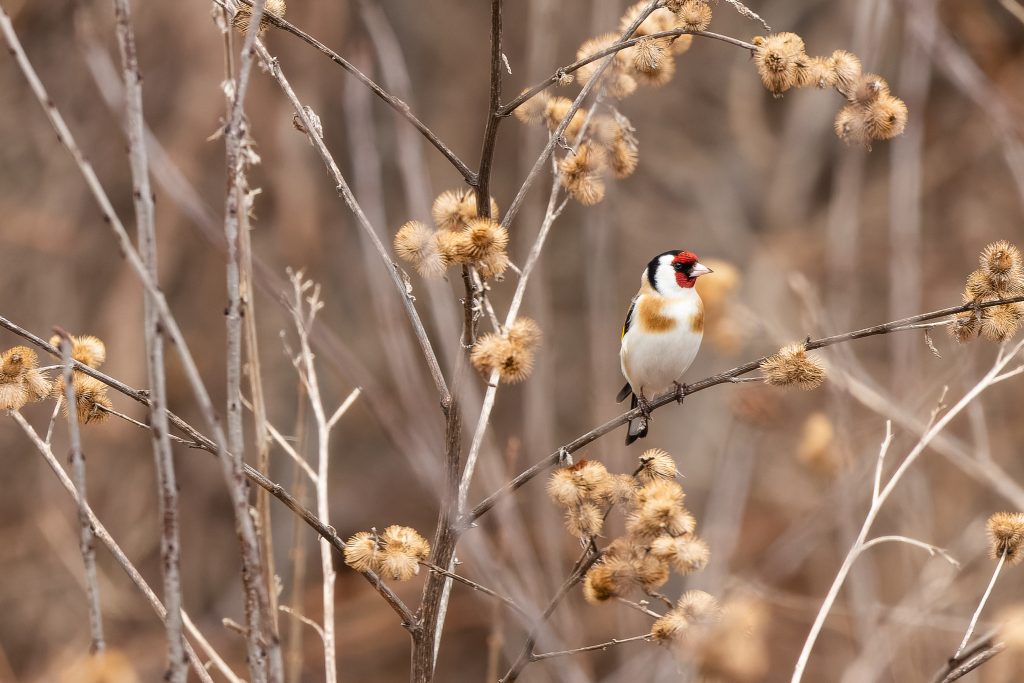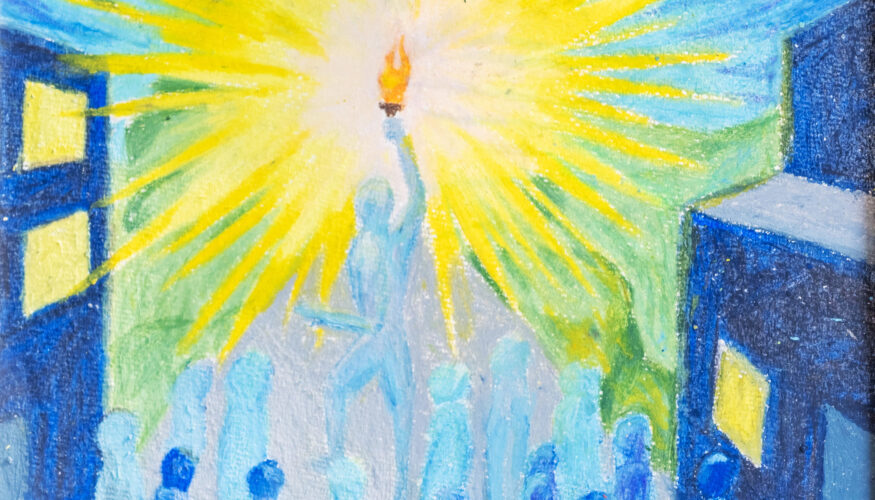The European Goldfinch is a small passerine bird that belongs to the finch family.
It is a brightly colored bird with a red face, black and white head, and yellow wings. They are known for their twittering and tinkling songs. The birds are not native to the United States but have been spotted more frequently in recent years in southeastern Wisconsin.
Bird enthusiasts all around the region have been thrilled about the many sightings of this small, colorful bird. The popularity of bird feeders in our area and the availability of birdseed containing Nyjer seeds, a favorite food of the European Goldfinch, may be one of the reasons the birds are in our area.
Recently, Mike Middleton submitted a photo of a European Goldfinch to the Capturing Kenosha – A Photographers Place Facebook Group. Middleton’s post drew many responses from bird enthusiasts online which included sightings in Union Grove, Oak Creek, Mount Pleasant, Kenosha, and Pleasant Prairie.
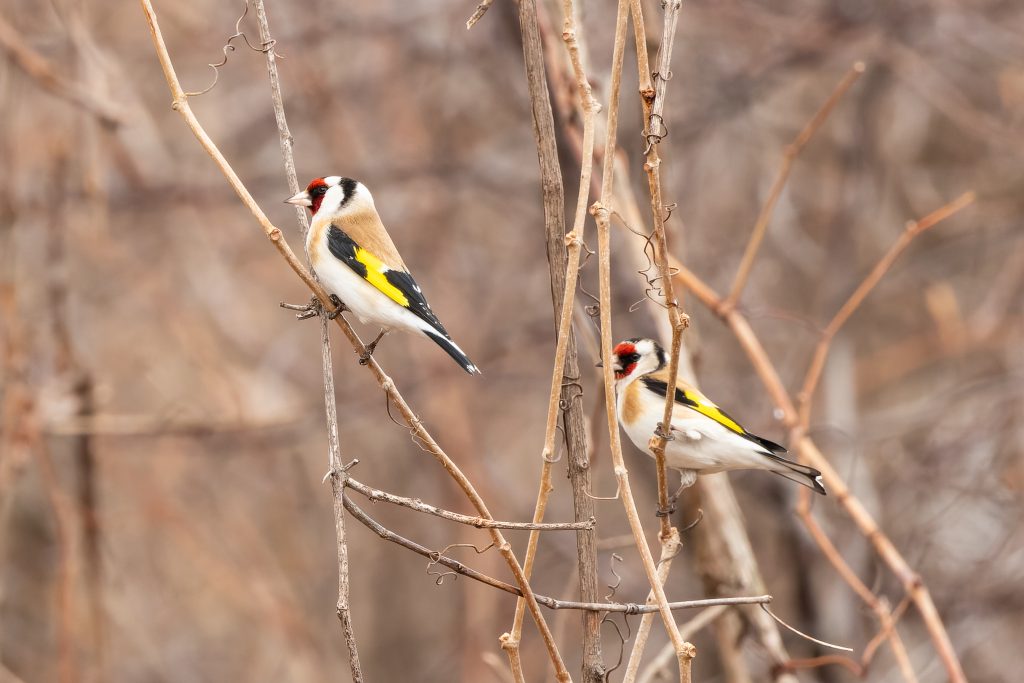
According to Jo Ann Horyak of Mount Pleasant, the birds roam with the more common goldfinch groups in the area. Maggie Kirby commented online that she “believes they were deliberately released by an importer in Illinois.”
A Wisconsin Public Radio article I found online also seems to support the theory that they were either intentionally released or escaped from the pet store industry, although it is unclear where that originated.
While the presence of non-native species in an ecosystem can sometimes have negative effects, the European Goldfinch is not considered a threat to native species in Wisconsin according to the Wisconsin DNR.
In fact, the bird’s presence may even have positive impacts on the environment. According to the National Audubon Society, the European Goldfinch can help control insect populations and spread plant seeds.
So, the increase in sightings of European Goldfinches in southeastern Wisconsin is a welcome development for bird lovers like Mike Middleton and others.
The birds are known for their adaptability and have been able to survive in a wide range of habitats. Their very presence here in southeastern Wisconsin is a testament to the bird’s ability to adapt and thrive.
As more bird enthusiasts take notice of these beautiful birds, it is important to appreciate the beauty and diversity they bring to the natural world right here in our own backyard.

